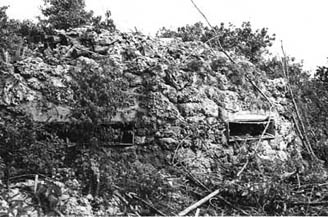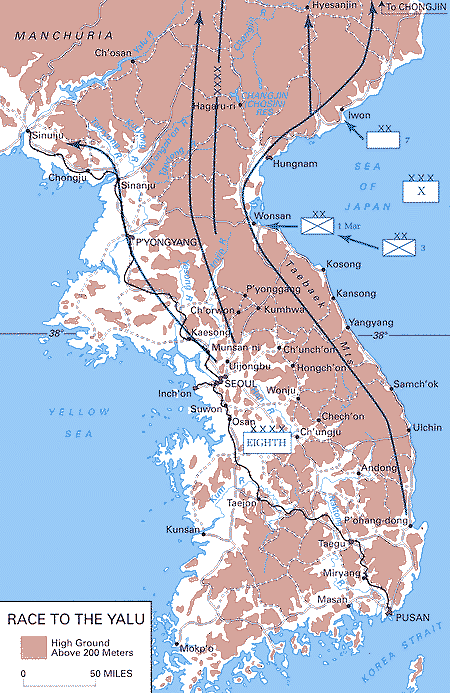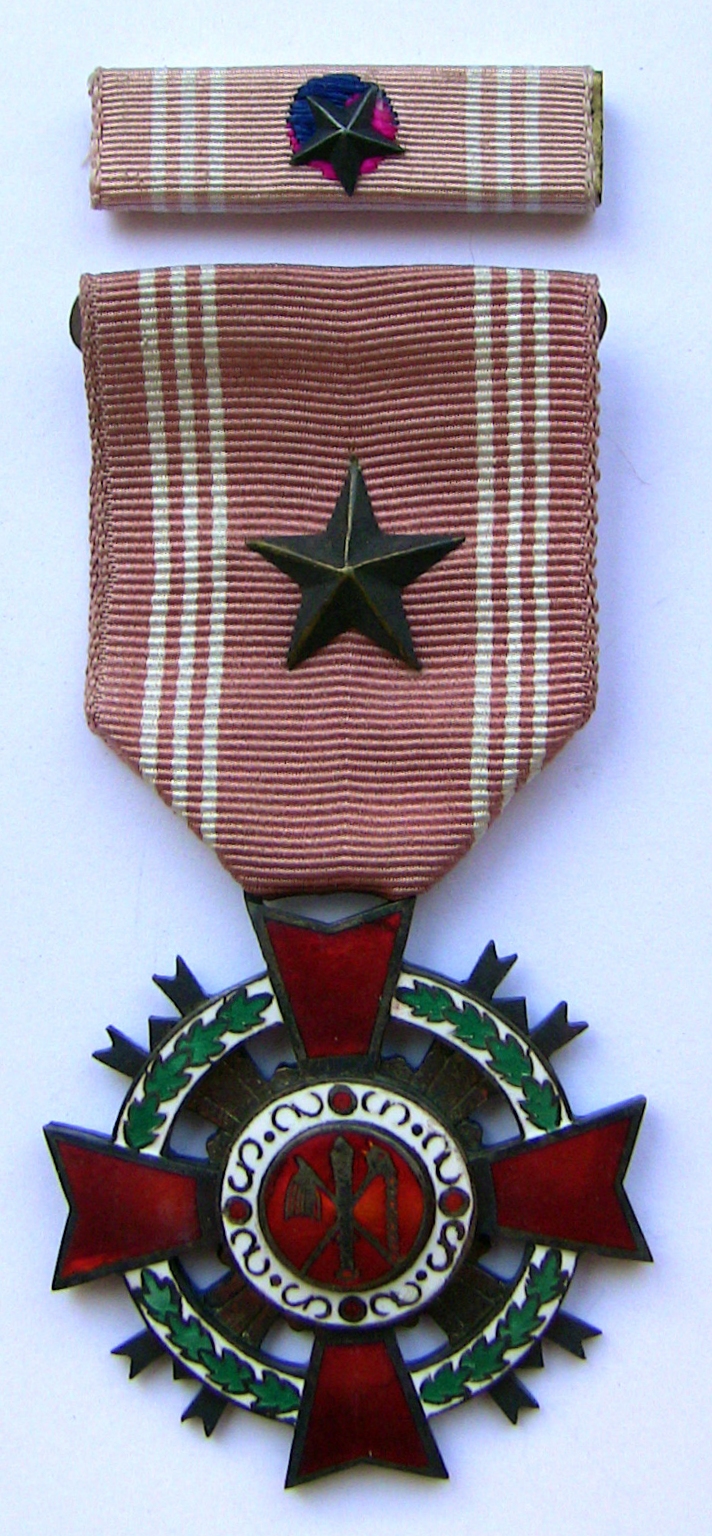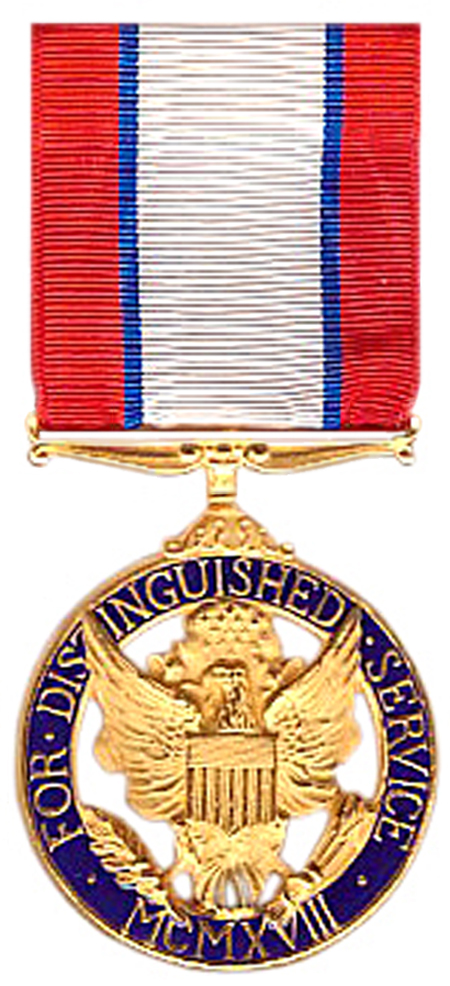|
Oliver P. Smith
Oliver Prince Smith (October 26, 1893 – December 25, 1977) was a U.S. Marine four-star general and decorated combat veteran of World War II and the Korean War. He is most noted for commanding the 1st Marine Division during the first year of the Korean War, and notably during the Battle of Chosin Reservoir, where he said "Retreat, Hell! We're just attacking in another direction." This is commonly misquoted as "Retreat, hell! We're not retreating, we're just advancing in a different direction." He retired at the rank of four-star general, being advanced in rank for having been specially commended for heroism in combat. Military career Early years Smith was born in Menard, Texas. His father died when he was seven, and his mother moved to Northern California. He graduated from Santa Cruz High School in 1911. He attended the University of California, Berkeley, working his way through college doing odd jobs (mostly gardening). After graduation, he reported for active duty as a seco ... [...More Info...] [...Related Items...] OR: [Wikipedia] [Google] [Baidu] |
Battle Of Peleliu
The Battle of Peleliu, codenamed Operation Stalemate II by the United States Armed Forces, US military, was fought between the United States and Empire of Japan, Japan during the Mariana and Palau Islands campaign of World War II, from 15 September to 27 November 1944, on the island of Peleliu. United States Marine Corps, US Marines of the 1st Marine Division and then soldiers of the United States Army, US Army's 81st Infantry Division (United States), 81st Infantry Division fought to capture Peleliu Airfield, an airfield on the small coral island of Peleliu. The battle was part of a larger offensive campaign known as Operation Forager, which ran from June to November 1944 in the Pacific War, Pacific Theater. Major General William Rupertus, the commander of the 1st Marine Division, predicted that the island would be secured within four days. However, after repeated Imperial Japanese Army defeats in previous island campaigns, Japan had developed new island-defense tactics and we ... [...More Info...] [...Related Items...] OR: [Wikipedia] [Google] [Baidu] |
Battle Of Chosin Reservoir
The Battle of Chosin Reservoir, also known as the Chosin Reservoir Campaign or the Battle of Lake Changjin (), was an important battle in the Korean War. The name "Chosin" is derived from the Japanese pronunciation "''Chōshin'', instead of the Korean pronunciation. The battle took place about a month after the People's Republic of China entered the conflict and sent the People's Volunteer Army (PVA) 9th Corps to infiltrate the northeastern part of North Korea. On 27 November 1950, the Chinese force surprised the US X Corps (United States), X Corps commanded by Major General Edward Almond in the Chosin Reservoir area. A brutal 17-day battle in freezing weather soon followed. Between 27 November and 13 December, 30,000 United Nations Command troops, later nicknamed "The Chosin Few", under the field command of Major General Oliver P. Smith were encircled and attacked by about 120,000 Chinese troops under the command of Song Shilun, who had been ordered by Mao Zedong to ... [...More Info...] [...Related Items...] OR: [Wikipedia] [Google] [Baidu] |
Battle Of Okinawa
The , codenamed Operation Iceberg, was a major battle of the Pacific War fought on the island of Okinawa Island, Okinawa by United States Army and United States Marine Corps forces against the Imperial Japanese Army during the Pacific War, Imperial Japanese Army. The initial invasion of Okinawa on 1 April 1945 was the largest Amphibious warfare, amphibious assault in the Pacific Theater of World War II. The Kerama Islands surrounding Okinawa were preemptively captured on 26 March 1945 by the United States Army, U.S. Army 77th Sustainment Brigade, 77th Infantry Division. The 82-day battle on Okinawa lasted from 1 April 1945 until 22 June 1945. After a long campaign of Leapfrogging (strategy), island hopping, the Allies of World War II, Allies were planning to use Kadena Air Base on the island as a staging point for Operation Downfall, the planned invasion of the Japanese archipelago, Japanese home islands, away. The United States created the Tenth United States Army, Tenth Army ... [...More Info...] [...Related Items...] OR: [Wikipedia] [Google] [Baidu] |
Order Of Military Merit (South Korea)
The Order of Military Merit (Hangul: 무공훈장) is the primary military decoration awarded by the South Korean government. It is awarded to a person who rendered "outstanding military services by participating in an action in time of war or in quasi-state of war or by performing his/her duty equivalent to combat, such as responding to the attack of an enemy in a contact area." History On 18 October 1950, law about Order of Military Merit was enacted. Original names are as follows: * First Class Order of Military Merit, * Second Class Order of Military Merit, * Third Class Order of Military Merit, * Fourth Class Order of Military Merit On 19 August 1951, The names were changed as follows: * Taegeuk Order of Military Merit, * Eulji Order of Military Merit, * Chungmu Order of Military Merit, * Hwarang Order of Military Merit On 14 December 1963, Inheon Order of Military Merit was added. Classes and Grades The Order of Military Merit is awarded in five classes and eac ... [...More Info...] [...Related Items...] OR: [Wikipedia] [Google] [Baidu] |
Air Medal
The Air Medal (AM) is a military decoration of the United States Armed Forces. It was created in 1942 and is awarded for single acts of heroism or meritorious achievement while participating in aerial flight. Criteria The Air Medal was established by , signed by Franklin D. Roosevelt on May 11, 1942. It was awarded retroactive to September 8, 1939, to anyone who distinguishes himself by meritorious achievement while serving with the Armed Forces in aerial flight. The original award criteria set by an Army Policy Letter dated September 25, 1942, were for one award of the Air Medal:AFD-130506-008 Distinguished Flying Cross and Air Medal Criteria in the Army Air Forces in World War II – In Rough Chronological Sequence'. Spink, Barry L. ''Air Force Historical Research Agency'', 4 March 2010) * per each naval vessel or three enemy aircraft in flight confirmed destroyed. An entire aircrew would be credited for the destruction of a ship, but only the pilot or gunner responsible wou ... [...More Info...] [...Related Items...] OR: [Wikipedia] [Google] [Baidu] |
Bronze Star Medal
The Bronze Star Medal (BSM) is a Awards and decorations of the United States Armed Forces, United States Armed Forces decoration awarded to members of the United States Armed Forces for either heroic achievement, heroic service, meritorious achievement, or meritorious service in a Combat, combat zone. When the medal is awarded by the United States Army, Army, United States Air Force, Air Force, or United States Space Force, Space Force for acts of valor in combat, the "V" device is authorized for wear on the medal. When the medal is awarded by the United States Navy, Navy, United States Marine Corps, Marine Corps, or United States Coast Guard, Coast Guard for acts of valor or meritorious service in combat, the "V" device#Navy, Marine Corps, and Coast Guard, Combat "V" is authorized for wear on the medal. Officers from the other Uniformed services of the United States, Uniformed Services of the United States are eligible to receive this award, as are foreign soldiers who have ... [...More Info...] [...Related Items...] OR: [Wikipedia] [Google] [Baidu] |
Legion Of Merit
The Legion of Merit (LOM) is a Awards and decorations of the United States military, military award of the United States Armed Forces that is given for exceptionally meritorious conduct in the performance of outstanding services and achievements. The decoration is issued to members of the eight uniformed services of the United States Note: National Oceanic and Atmospheric Administration Commissioned Officer Corps Amendments Act of 2012 amended the Legion of Merit to be awarded to any uniformed service. as well as to military and political figures of foreign governments. The Legion of Merit (Commander degree) is one of only two United States military decorations to be issued as a neck order (the other being the Medal of Honor), and the only United States military decoration that may be issued in degrees (much like an Order (honour), ... [...More Info...] [...Related Items...] OR: [Wikipedia] [Google] [Baidu] |
Silver Star
The Silver Star Medal (SSM) is the United States Armed Forces' third-highest military decoration for valor in combat. The Silver Star Medal is awarded primarily to members of the United States Armed Forces for gallantry in action against an enemy of the United States. History The Silver Star Medal (SSM) is the successor award to the Citation Star which was established by an Act of Congress on 9 July 1918, during World War I. On 19 July 1932, the Secretary of War approved the conversion of the Citation Star to the SSM with the original Citation Star incorporated into the center of the medal. Authorization for the Silver Star Medal was placed into law by an Act of Congress for the U.S. Navy on 7 August 1942, and an Act of Congress for the U.S. Army on 15 December 1942. The current statutory authorization for the medal is Title 10 of the United States Code, for the U.S. Army, for the U.S. Navy and U.S. Marine Corps, and for the U.S. Air Force and U.S. Space Force. Th ... [...More Info...] [...Related Items...] OR: [Wikipedia] [Google] [Baidu] |
Army Distinguished Service Medal
The Distinguished Service Medal (DSM) is a military decoration of the United States Army that is presented to soldiers who have distinguished themselves by exceptionally meritorious service to the government in a duty of great responsibility. The performance must be such as to merit recognition for service that is clearly exceptional. The exceptional performance of normal duty will not alone justify an award of this decoration. The Army's Distinguished Service Medal is equivalent to the Naval Service's Navy Distinguished Service Medal, Air and Space Forces' Distinguished Service Medal, and the Coast Guard Distinguished Service Medal. Prior to the creation of the Air Force's Distinguished Service Medal in 1960, United States Air Force airmen were awarded the Army's Distinguished Service Medal. Description *The coat of arms of the United States in Gold surrounded by a circle of Dark Blue enamel, 1 ½ inches in diameter, bearing the inscription "FOR DISTINGUISHED SERVICE MCMXV ... [...More Info...] [...Related Items...] OR: [Wikipedia] [Google] [Baidu] |
Navy Distinguished Service Medal
The Navy Distinguished Service Medal is a military decoration of the United States Navy and United States Marine Corps which was first created in 1919 and is presented to Sailors and Marines to recognize distinguished and exceptionally meritorious service to the United States while serving in a duty or position of great responsibility. Navy Distinguished Service Medal is equivalent to the Army's Distinguished Service Medal, Air and Space Forces' Air Force Distinguished Service Medal, and the Coast Guard Distinguished Service Medal. The Navy Distinguished Service Medal was originally senior to the Navy Cross, until August 1942 when the precedence of the two decorations was reversed. Currently, it is worn after the Defense Distinguished Service Medal and before the Silver Star Medal. History At the start of World War I, the Department of the Navy had the Medal of Honor as the only decoration with which to recognize heroism. To recognize acts deserving recognition, but at ... [...More Info...] [...Related Items...] OR: [Wikipedia] [Google] [Baidu] |
Distinguished Service Cross (United States)
The Distinguished Service Cross (DSC) is the United States Army's second highest Awards and decorations of the United States military, military decoration for soldiers who display extraordinary heroism in combat with an armed enemy force. Actions that merit the Distinguished Service Cross must be of such a high degree that they are above those required for all other U.S. combat decorations, but which do not meet the criteria for the Medal of Honor. The Army Distinguished Service Cross is equivalent to the Naval Services' Navy Cross, the Air and Space Forces' Air Force Cross (United States), Air Force Cross, and the Coast Guard Cross. Prior to the creation of the Air Force Cross in 1960, airmen were awarded the Distinguished Service Cross. The Distinguished Service Cross was first awarded during World War I. In addition, a number of awards were bestowed for actions which took place before World War I. In many cases, the medal was awarded to soldiers who had received a Certificate ... [...More Info...] [...Related Items...] OR: [Wikipedia] [Google] [Baidu] |
First And Second Battles Of Wonju
The First and Second Battles of Wonju (), also known as the Wonju Campaign or the Third Phase Campaign Eastern SectorThe Western Sector is the Third Battle of Seoul. (), was a series of engagements between North Korean and United Nations (UN) forces during the Korean War. The battle took place from December 31, 1950, to January 20, 1951, around the South Korean town of Wonju. In coordination with the Chinese capture of Seoul on the western front, the North Korean Korean People's Army (KPA) attempted to capture Wonju in an effort to destabilize the UN defenses along the central and the eastern fronts. After a joint Chinese People's Volunteer Army (PVA) and KPA assault breached the UN defenses at Chuncheon on New Year's Eve of 1951, KPA V Corps attacked US X Corps at Wonju while KPA II Corps harassed US X Corps' rear by engaging in guerrilla warfare. In response, US X Corps under the command of Major General Edward Almond managed to cripple the KPA forces at Wonju, and the UN ... [...More Info...] [...Related Items...] OR: [Wikipedia] [Google] [Baidu] |









